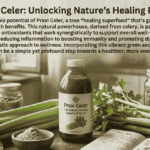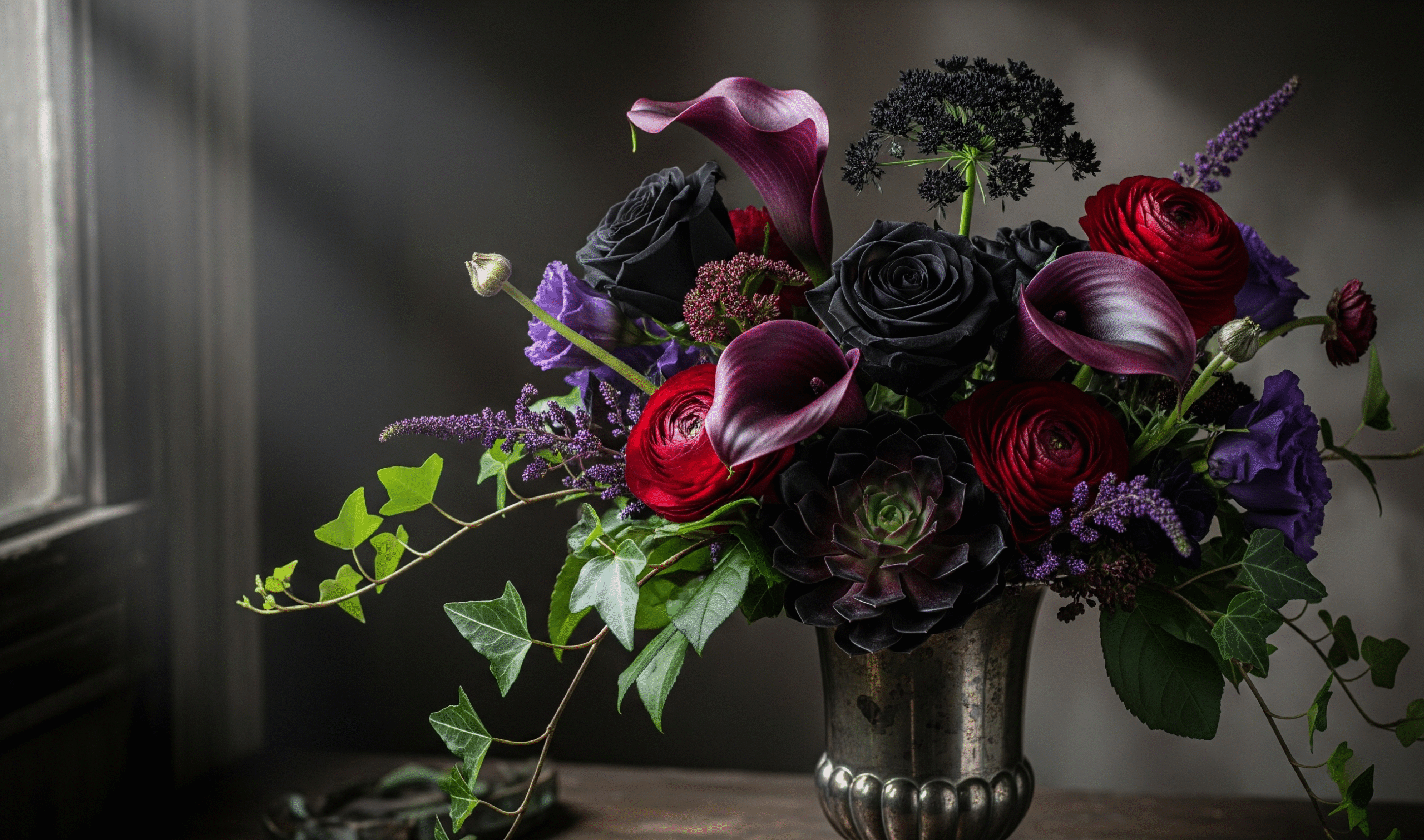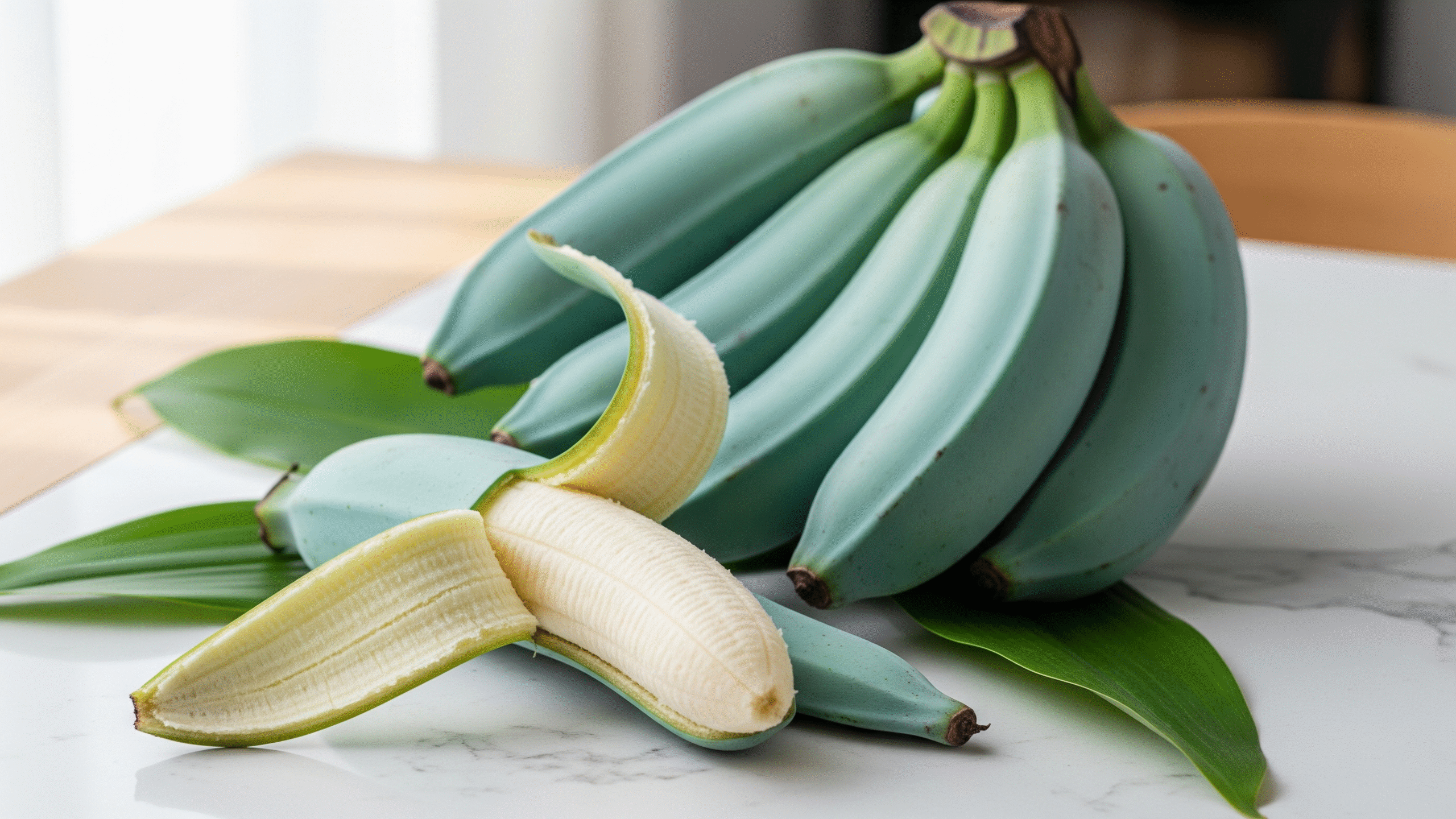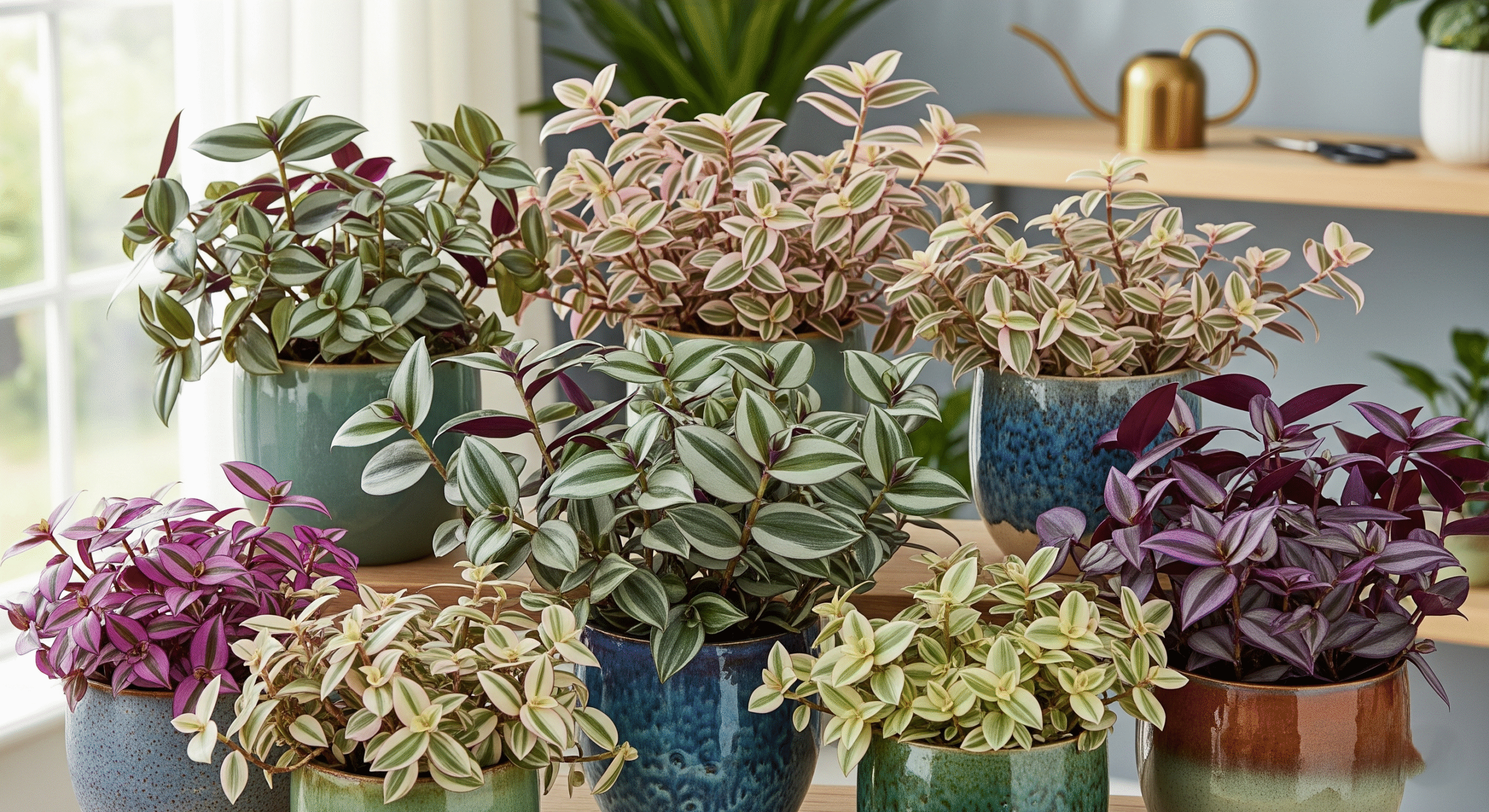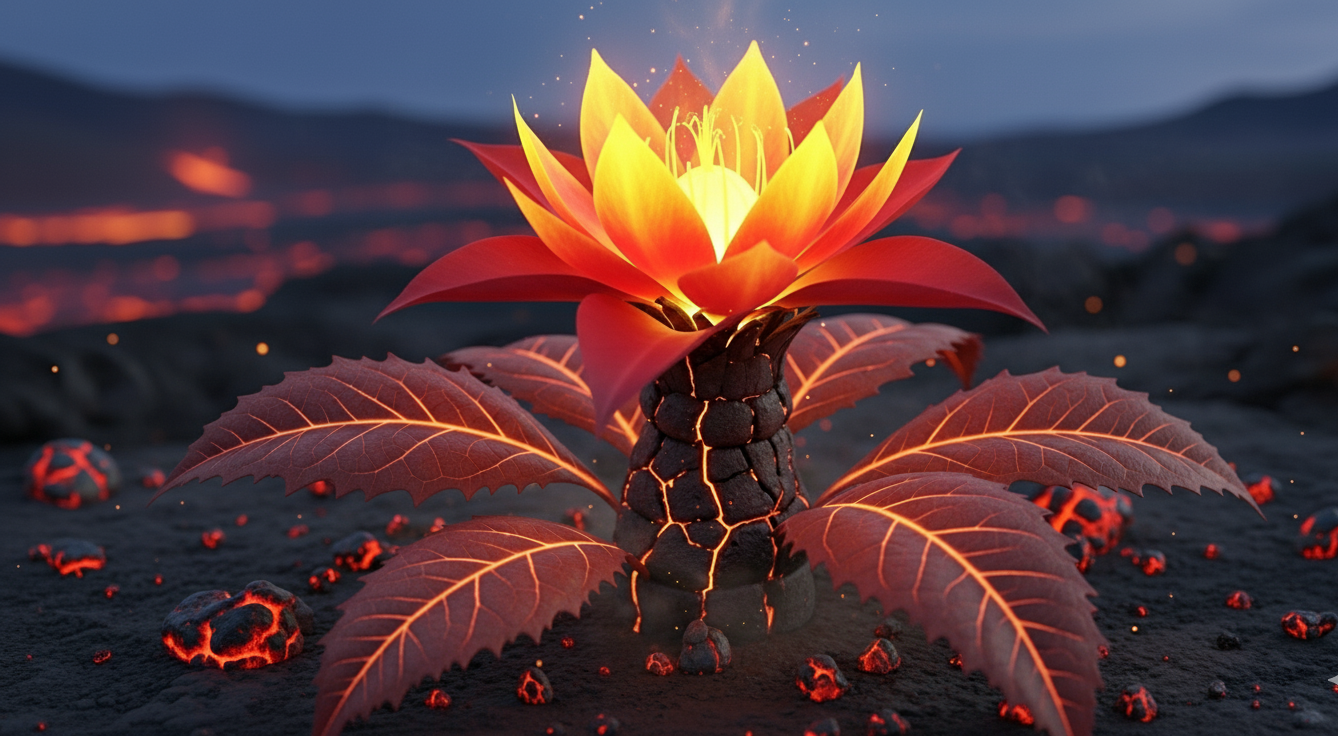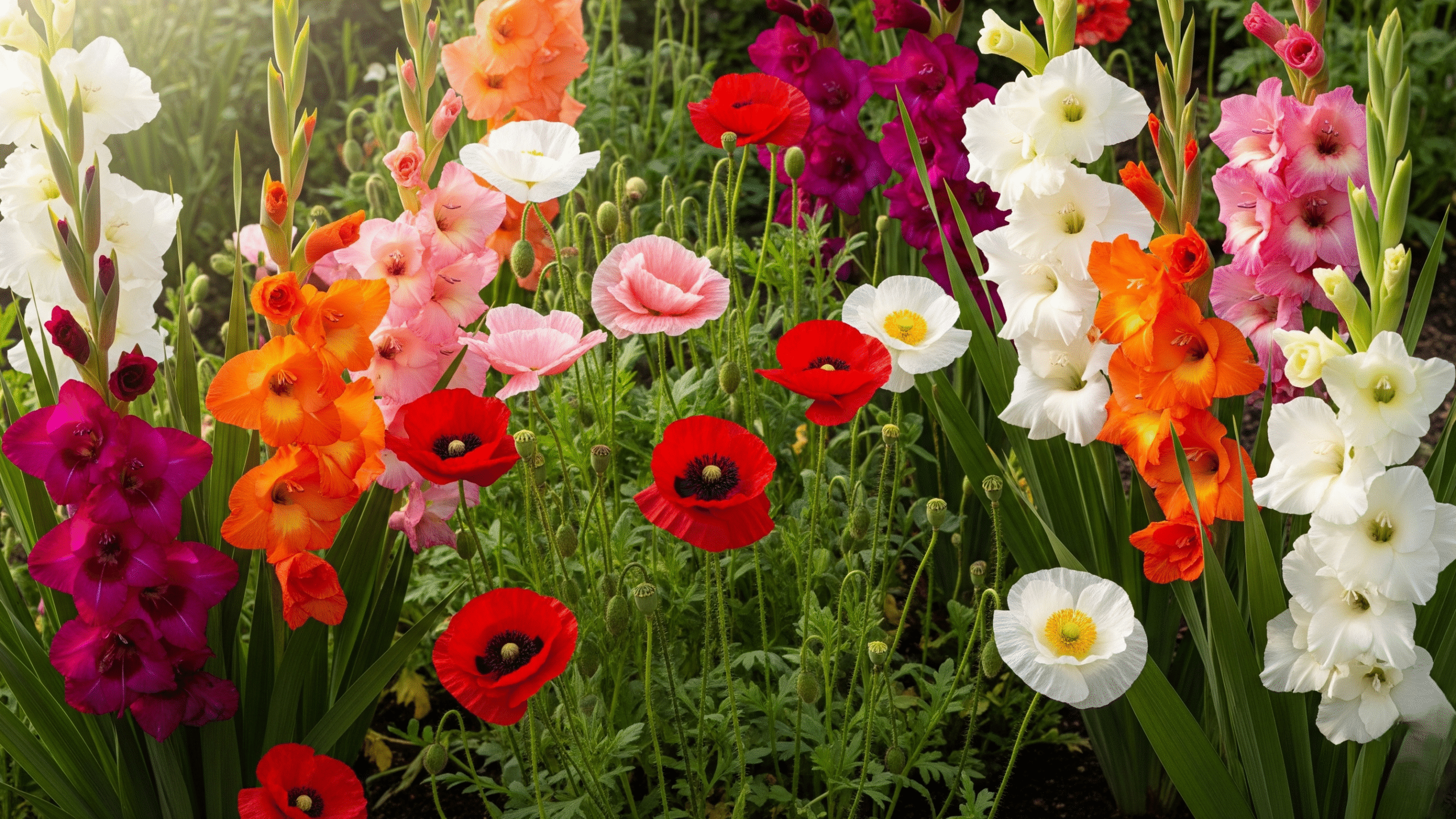The realm of floristry goes beyond just bright and cheerful colors. There’s a deeper, more enigmatic beauty that flourishes in the shadows: the world of gothic flowers. This intriguing style, often linked with emo flowers and the mourning customs of the Victorian era, embraces deep tones, striking shapes, and profound symbolism. If you find yourself captivated by the darkly elegant, this ultimate guide reveals the most popular gothic flower names, their eerie meanings, and expert advice on crafting your very own gothic floral masterpiece.
What Defines a Goth Flower? (Beyond the Color Black)
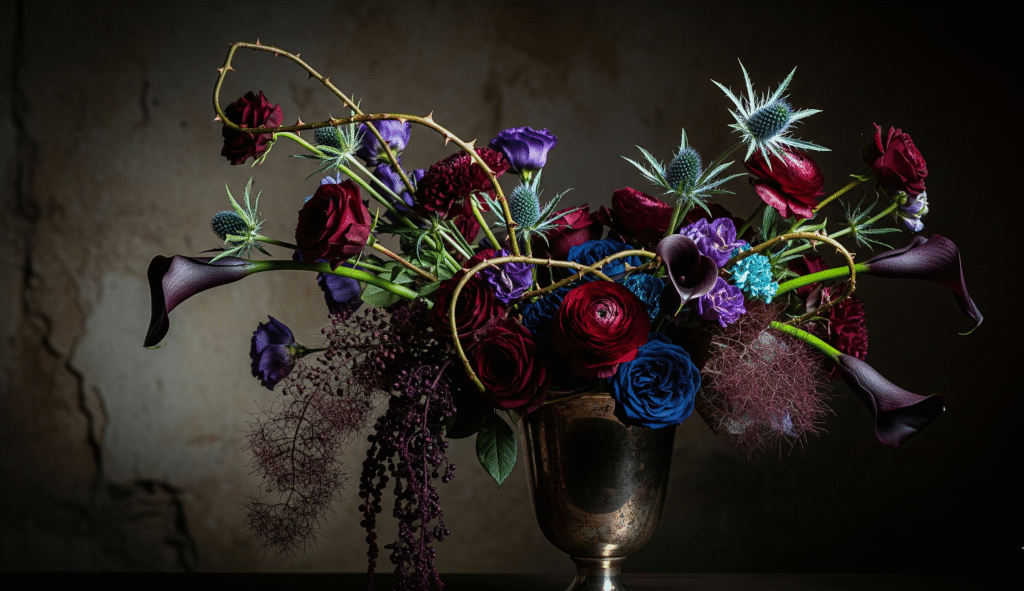
When folks dive into searches for “goth flowers” or “gothic flower,” they’re usually after something that goes beyond just a dark petal. This aesthetic is all about:
- Deep, Moody Color Palettes: Imagine rich shades like burgundy, aubergine, blood red, and navy blue that can look almost black in certain lighting.
- Dramatic Morphology: Think spiky forms, drooping vines, velvety textures, and quirky shapes that bring a sense of intrigue.
- Symbolic Meaning: Tied to floriography (the Victorian language of flowers), these blooms often carry themes of mystery, strength, rebirth, and a touch of melancholy.
Grasping this distinction is essential for truly appreciating the richness of the gothic floral trend.
11 Gothic Flower Names for a Dark Garden or Bouquet
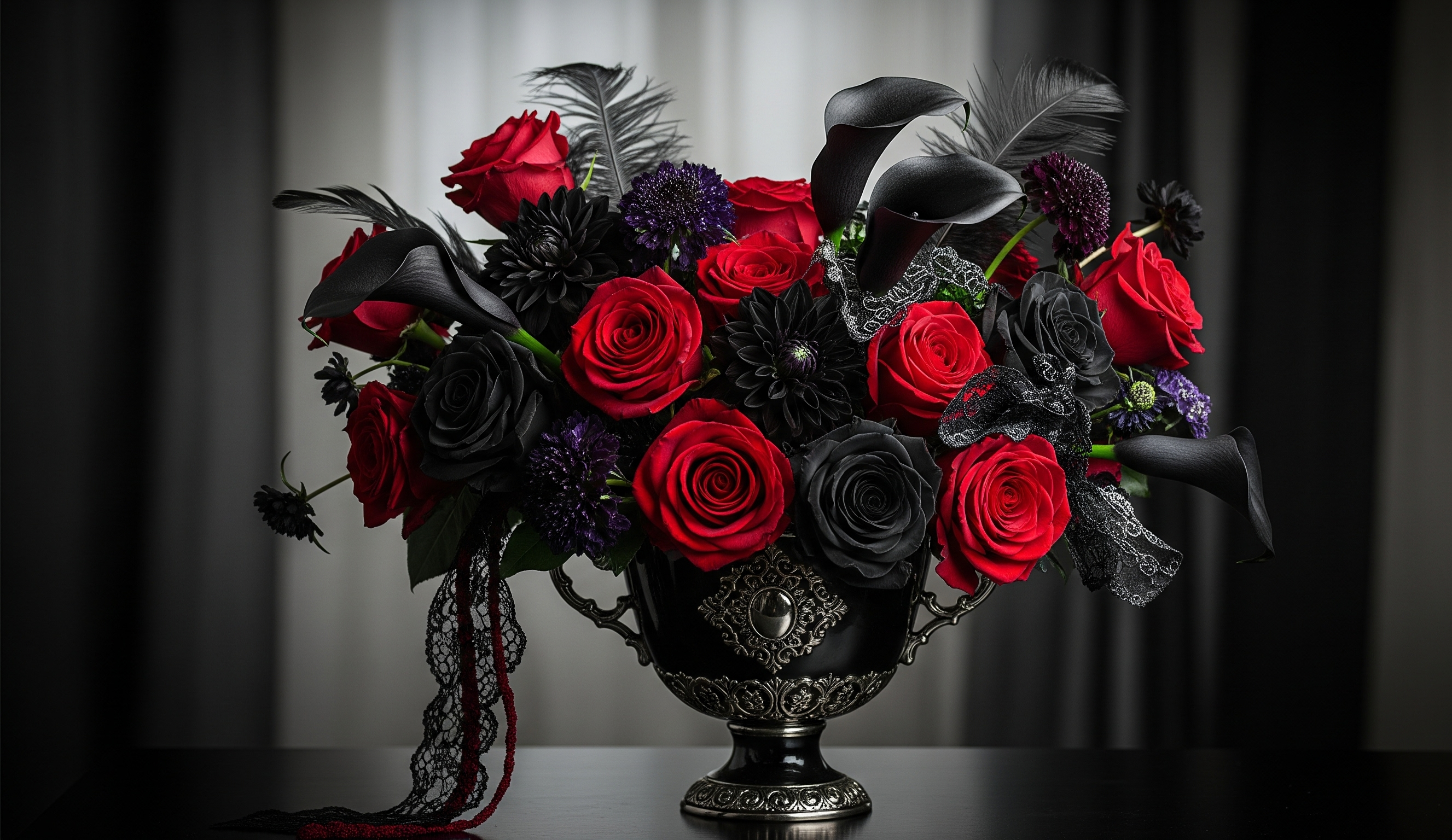
Looking to create a dark and enchanting atmosphere? Here are some of the most sought-after flowers that can help you achieve that vibe.
1. Black Calla Lily
This flower is the very definition of modern gothic elegance. With its sleek, trumpet-like shape and rich, almost black hue, it embodies stunning beauty and resilience. It makes for a perfect centerpiece in any arrangement.
2. Black Dahlia
Arguably the most notorious of all gothic flowers. This deep maroon bloom is wrapped in mystery and tragedy, representing betrayal, inner strength, and a flair for the dramatic.
3. Bat Flower (Tacca chantrieri)
For those who crave the truly exotic. This flower, with its wing-like bracts and long, whisker-like filaments, looks like it belongs in a haunted greenhouse. It stands for uniqueness and mystery.
4. Queen of the Night Tulip
A tulip so dark purple it almost seems black. This rare variety symbolizes power, royalty, and elegance, all with a dark, romantic twist. It’s ideal for a sophisticated goth bouquet.
5. Hellbore (Christmas Rose)
Rich in witchcraft lore and ancient medicinal uses, the Hellbore’s downward-facing blooms symbolize serenity, but also carry hints of scandal and anxiety. It’s a perfect match for a historical gothic theme.
6. Dark Purple Hyacinth
Born from Greek tragedy, the hyacinth emerged from the blood of a dying youth. The deep purple variety holds a profound meaning of sorrow, regret, and a heartfelt plea for forgiveness.
7. Belladonna (Deadly Nightshade)
This is the iconic poisonous plant steeped in gothic tales. With its stunning purple bell-shaped flowers and shiny black berries, it represents silence, deceit, and a dangerous allure. (Just a heads up: it’s highly toxic, so handle with care!)
8. Chocolate Cosmos
This flower boasts a rich reddish-brown hue and a delightful scent reminiscent of vanilla and chocolate. It embodies deep passion and harmonious love, making it a perfect addition to your gothic floral arrangements.
9. Black Baccara Rose
Think of the classic rose, but with a twist. The Black Baccara is a hybrid tea rose that flaunts a deep, smoky crimson color. It symbolizes tragic love, farewells, and rebirth—truly a staple in gothic symbolism.
10. Eryngium (Sea Holly)
With its spiky, steely-blue thistle-like look, Sea Holly brings an incredible texture and a rugged, architectural touch to your arrangements. It stands for independence and severity.
11. Anemone (Windflower)
Featuring a dark, almost black center known as the “eye of sorrow,” along with deep red or purple petals, the Anemone symbolizes forsaken love, anticipation, and protection against evil.
How to Create a Gothic Floral Arrangement in 4 Steps
Creating a captivating goth arrangement is all about setting the right mood. Here’s how to do it:
- Choose Your Palette: Start with 2-3 dark blooms to anchor your arrangement—think Black Baccara Roses and Black Calla Lilies. Then, add some texture with spiky Eryngium and trailing vines for that extra flair.
- Select the Perfect Vessel: Make sure your flowers shine by picking a complementary container. A black matte vase, a vintage pewter pitcher, or a weathered concrete urn can really enhance the overall look.
- Embrace Asymmetry and Drama: Gothic flowers thrive on dramatic structures. Aim for height, let some elements cascade, and don’t shy away from negative space—it adds to the intrigue.
- Add Macabre Accents: Incorporate non-floral touches like black feathers, dried pomegranates, black lace ribbon, or even small, weathered branches to give your arrangement that hauntingly beautiful vibe.
Conclusion
The realm of gothic flowers presents a striking way to showcase a unique, poetic, and beautifully dark aspect of nature. From the tragic allure of the Black Dahlia to the architectural flair of Sea Holly, these blooms narrate a tale that runs much deeper than their more vibrant counterparts. We hope this guide sparks your creativity to craft something hauntingly beautiful.
Read More: August Birth Flower: Gladiolus & Poppy Meanings
FAQs
Q: What’s the most gothic flower?
A: The Black Dahlia often takes the crown as the most gothic flower, thanks to its notorious name and strikingly dark, dramatic look. The Bat Flower comes in a close second with its one-of-a-kind appearance.
Q: Are there any naturally black flowers?
A: True black flowers are quite a rarity in nature. What we often call “black” flowers are usually just very deep shades of purple, red, or maroon.
Q: How do gothic flowers differ from emo flowers?
A: While there’s some overlap in color palettes, gothic flowers tend to embody elegance, mystery, and historical symbolism. Emo flowers, on the other hand, often convey raw emotion, vulnerability, and modern angst, frequently featuring brighter accent colors like hot pink or electric blue.

